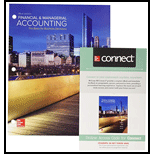
Concept explainers
a.
Calculate the amount of bonus based on;
(1) Company G peso-based pre-tax income.
(2) Company G dollar-based pre-tax income. Translate the peso-based bonus of Company G into dollars using current exchange rate.
a.
Explanation of Solution
(1) The calculation based on Company G pesos pre-tax income is as follows:
Therefore, the peso-based bonus for Company G is MXN 600,000.
(2) The calculation based on Company G dollar-based pre-tax income is as follows:
Therefore, the dollar-based bonus for Company G is ($90,000) or no bonus.
Convert the Company G pesos pre-tax income in to Company G dollars using current exchange rate:
Note: The value of current exchange rate is taken from Exhibit 15-7.
b.
Calculate the average exchange rate that is used to translate the Company G’s pesos income statement into the Company G’s dollar statement for the categories:
- (1) Sales and
- (2) Expenses.
b.
Explanation of Solution
The average exchange rate that is used to translate the Company G pesos income statement into the Company G dollar statement for sales is calculated as follows:
Therefore, the average exchange rate is $0.075/ pesos.
The average exchange rate that is used to translate the Company G pesos income statement into the Company G dollar statement for expenses is calculated as follows
Therefore, the average exchange rate is $0.08684/ pesos.
Note: MXN is the currency unit of Mexico.
c.
Explain the way in which global products of Country M’s pre-tax income became a dollar pre-tax loss.
c.
Explanation of Solution
The way in which global products of Country M’s pre-tax income became a dollar pre-tax loss is listed as follows:
- The difference in the average exchange rates is caused by translation timing differences.
- For example, Sales may clutch around holidays, but expenses for cost of sales remains continuous over the year.
- The procedures to create the translated statement by Incorporation G might cause the disparities in the average exchange rate.
d.
Explain a reason for which the dollar-based pre-tax income would be appropriate for evaluating Person S and a reason for which the peso-based pre-tax income would be appropriate for evaluating Person S and state the option that is appropriate.
d.
Explanation of Solution
There is no clear answer to this question but certain issues that can be discussed are as follows:
- Does Person S have the ability to “control” USD income?
- If the objective is to generate profits that can be distributed to Company G stockholders, the dollar based pre-tax income may be appropriate.
- What is the Incorporation G’s subsidiary objective?
- If it is market penetration, then sales may be a better basis for performance evaluation.
- Do the translation procedures that result in a USD pre-tax loss make economic sense?
Want to see more full solutions like this?
Chapter 15 Solutions
Gen Combo Looseleaf Financial And Managerial Accounting; Connect Access Card
- LCD Industries purchased a supply of electronic components from Entel Corporation on November 1, 2024. In payment for the $25.3 million purchase, LCD issued a 1-year installment note to be paid in equal monthly payments at the end of each month. The payments include interest at the rate of 24%. Required: 1. & 2. Prepare the journal entries for LCD's purchase of the components on November 1, 2024 and the first installment payment on November 30, 2024. 3. What is the amount of interest expense that LCD will report in its income statement for the year ended December 31, 2024? Note: Use tables, Excel, or a financial calculator. (FV of $1, PV of $1, FVA of $1, PVA of $1, FVAD of $1 and PVAD of $1) > Answer is not complete. Complete this question by entering your answers in the tabs below. Req 1 and 2 Req 3 What is the amount of interest expense that LCD will report in its income statement for the year ended December 31, 2024? Note: Round intermediate calculations and final answers to the…arrow_forwardHiarrow_forwardSolve with explanation and accountingarrow_forward
- Compute the roc stockholders equityarrow_forwardWhat income will be earned if the investment generatesarrow_forwardDuring 2018, the band Maroon 5 is touring across the U.S. on its "Red Pill Blues Tour 2018." Two of those concerts, on October 14 and 15, will be held at Madison Square Garden in New York City. Madison Square Garden has a seating capacity for concerts of approximately 19,000. According to a Business Insider article in December 2016, Maroon 5 had an average concert ticket price of $165.Assume that these two Madison Square Garden concerts were sold out on the first day the tickets were available for sale to the public, November 4, 2017. Also assume, for the sake of simplicity, that all tickets are sold directly by Maroon5.Question:How will Maroon 5's balance sheet and income statement be impacted by the sale of the Madison Square Garden tickets on November 4, 2017 and what specific accounts will be impacted and will it be increased or decreased?arrow_forward

 AccountingAccountingISBN:9781337272094Author:WARREN, Carl S., Reeve, James M., Duchac, Jonathan E.Publisher:Cengage Learning,
AccountingAccountingISBN:9781337272094Author:WARREN, Carl S., Reeve, James M., Duchac, Jonathan E.Publisher:Cengage Learning, Accounting Information SystemsAccountingISBN:9781337619202Author:Hall, James A.Publisher:Cengage Learning,
Accounting Information SystemsAccountingISBN:9781337619202Author:Hall, James A.Publisher:Cengage Learning, Horngren's Cost Accounting: A Managerial Emphasis...AccountingISBN:9780134475585Author:Srikant M. Datar, Madhav V. RajanPublisher:PEARSON
Horngren's Cost Accounting: A Managerial Emphasis...AccountingISBN:9780134475585Author:Srikant M. Datar, Madhav V. RajanPublisher:PEARSON Intermediate AccountingAccountingISBN:9781259722660Author:J. David Spiceland, Mark W. Nelson, Wayne M ThomasPublisher:McGraw-Hill Education
Intermediate AccountingAccountingISBN:9781259722660Author:J. David Spiceland, Mark W. Nelson, Wayne M ThomasPublisher:McGraw-Hill Education Financial and Managerial AccountingAccountingISBN:9781259726705Author:John J Wild, Ken W. Shaw, Barbara Chiappetta Fundamental Accounting PrinciplesPublisher:McGraw-Hill Education
Financial and Managerial AccountingAccountingISBN:9781259726705Author:John J Wild, Ken W. Shaw, Barbara Chiappetta Fundamental Accounting PrinciplesPublisher:McGraw-Hill Education





